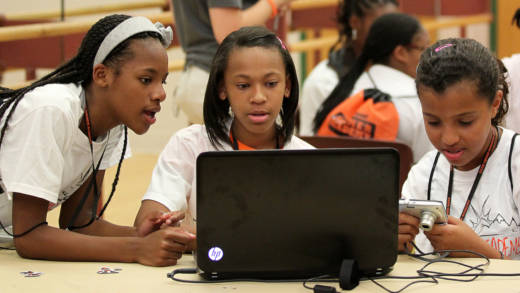At the beginning of the year, I showed my seniors a TED Talk by Rita Pierson called “Every Kid Needs a Champion.” I could tell they were instantly engaged with what Pierson had to say. A few minutes in, she describes a conversation she had with a colleague. When she told her colleague that “students don’t learn from people they don’t like,” my students responded with a loud applause. Most of us know there is tremendous power in building teacher-student relationships, but some of us struggle to create them. A welcoming and open online learning community is an often-overlooked way to create foundational relationships. Whether you use a learning management system (Google Classroom or Schoology), student blogs like edublogs, or a class website, online learning communities can be a place to build and nurture relationships that might not be so easy to create in a full class.
Be the first to be transparent.
I start each school year by giving my students a poem that I wrote in college about my childhood and my goals, but I don’t tell them it is mine. They read it and make inferences about the author based on the information given. They challenge perspectives and stereotypes. When I tell them it is my poem, they are surprised because it speaks candidly about abuses and hardships that I suffered as a child. I let them know that I will not ask them to share anything that I am not willing to share first. When they do quick writes, I write with them. When I ask their opinion, I am always willing to give mine as well. When my students create a blog, I create one too. You can view some samples of the transparency that I am talking about on my blog Students Make the Best Teachers.
You don’t have tell students your biggest or deepest secret to make an impact. In my experience, students are grateful when teachers treat them like actual people who can be trusted with personal stories. But I’m not proposing telling personal stories without any learning context. I am talking about the strategic sharing that happens when a teacher completes a task with students and interacts with them on a personal level about curriculum topics. Modeling transparency will not only help students feel comfortable opening up in their own assignments, but it will create a foundation for building future relationships.
Recognize and celebrate your students’ different perspectives.
